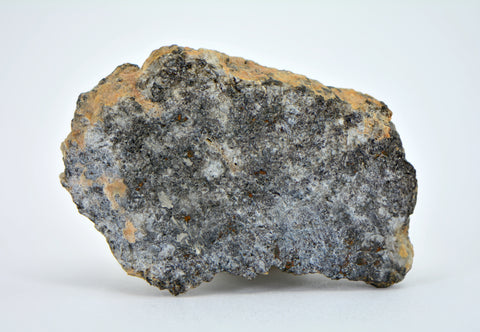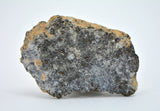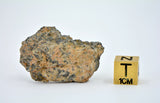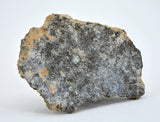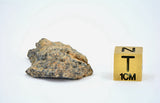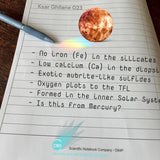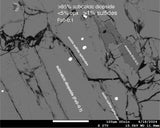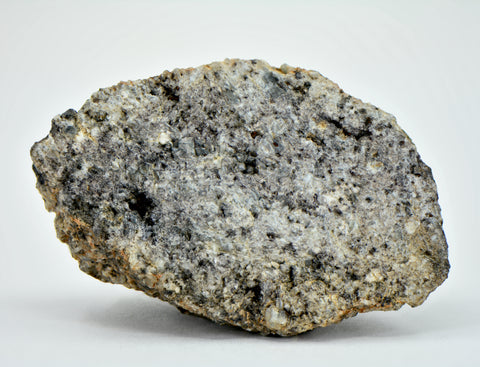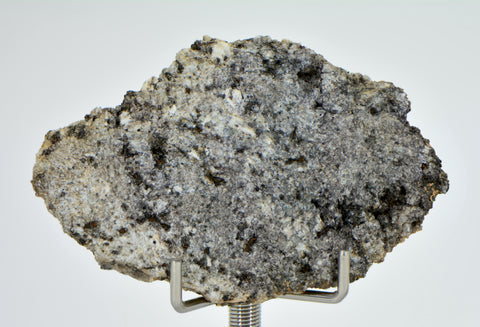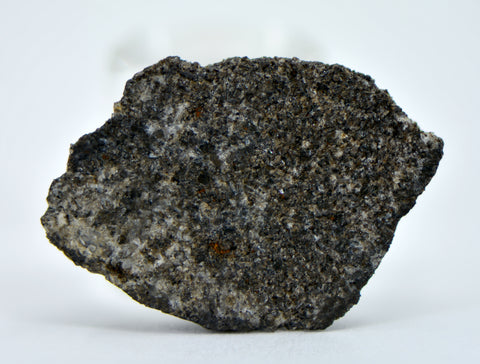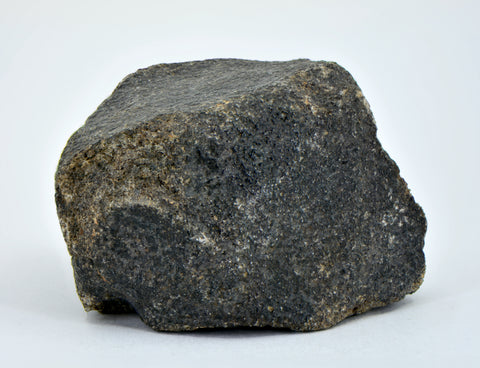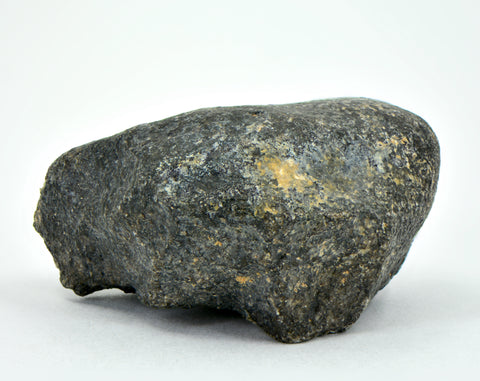9.96g Achondrite-ung Meteorite Suspected to be from Mercury

On Offer: 9.96g ungrouped achondrite composed of more than 90% subcalcic diopside and exotic aubrite-like sulfides. This is a very special new achondrite meteorite, currently under classification at CCMS and other institutions, that is arguably the strongest candidate for a meteorite from the planet Mercury. This meteorite likely pairs with a similar magnesian diopside achondrite NWA 15915, but while the geochemistries, modality, and oxygen isotopic ratios are nearly identical, they seems to have a slightly different textures with this meteorite having smaller overall crystal size than NWA 15915.
Provisional name: Ksar Ghilane 023
*Under classification at Colorado Center for Meteoritic Studies (CCMS)
Type: Achondrite-ung.
Parent Body: Unkown, speculation for *Mercury
Description: 9.96 gram end piece of an amazing new ungrouped achondrite composed almost entirely of iron free subcalcic diopside. This meteorite is very friable (fragile), because of this, and absence of iron in the silicates to oxidize, we have decided to leave the finish natural with no stabilization or filling in of voids during the polishing process.

Dustin studying the new achondrite with the EMPA (microprobe) at
CU Boulder, working to better understand the exotic sulfides. So far
we have identified the minerals Niningerite, Alabandite, and Daubréelite.
The EPMA results show this meteorite has no iron (Fs0-0.1) in the silicates, with exotic aubrite-like sulfide minerals that do contain Fe (perplexing) with an XS chemical formula where X can be Ca, Mg, Mn, Fe, or Cr which can take the form of the exotic sulfides; alabandite, nininengerite, Ti-bearing daubréelite, and others that are only found in the highly reduced enstatite chondrites, aubrites and rare reduced ungrouped achondrites.
*These new magnesian (Fs0-0.1) clinopyroxenites are potentially thought to have the right chemistry and mineralogy to be from Mercury. Other meteorites with similarly iron depleted / magnesium rich mineralogies have been found to be too old to be from Mercury. Age dating of this meteorite may help resolve some of the questions surrounding its origins. It's unlikely we will ever be able to 100% confirm or refute these claims of possible Mercury origin, but having a formation date in line with those predicted for the crust of Mercury might go a long way to supporting it.
What you get: 9.96 gram ungrouped achondrite meteorite specimen, as shown in a clear protective membrane box, with a signed Certificate of Authenticity.
I offer a 100% no questions asked 30 day return policy.
SEE PROVISIONAL METEORITICAL SOCIETY ENTRY BELOW
| Ksar Ghilane 023 | |||||
|---|---|---|---|---|---|
| Basic information | Name: Ksar Ghilane 023 This is a PROVISIONAL name. It cannot be used in publications. Abbreviation: KG 023 Observed fall: No Year found: 2024 Country: Tunisia Mass:  10 kg 10 kg |
||||
Classification history: |
|
||||
| Catalogs: |
|
||||
Provisional info: |
Name: Ksar Ghilane 023 Fieldname: MURC1 Origin/pseudonym: Tunisia Purchased: Libya Purchase or find date: Febuary, 2024 Lat/long: 32°33'31.4"N , 09°30'27.2"E Mass: 10 Kg Pieces: many Specimens: 20g TCU Description: An ungrouped magnesian clinopyroxenite achondrite with approximately >90% subcalcic diopside Fs0-0.1, <10% orthopyroxene Fs0-0.1, and >1% aubrite-like sulfides, oxygen plots to TFL, no olivine or plagioclase was found. Info: This meteorite may pair to Northwest Africa 15915 Name assigned to: Dustin Dickens Date assigned: 2024-05-03 Assigned by: Dustin Dickens |
||||
References: |
Never published in the Meteoritical Bulletin
|
||||
| Geography: |
|
||||
We Also Recommend

